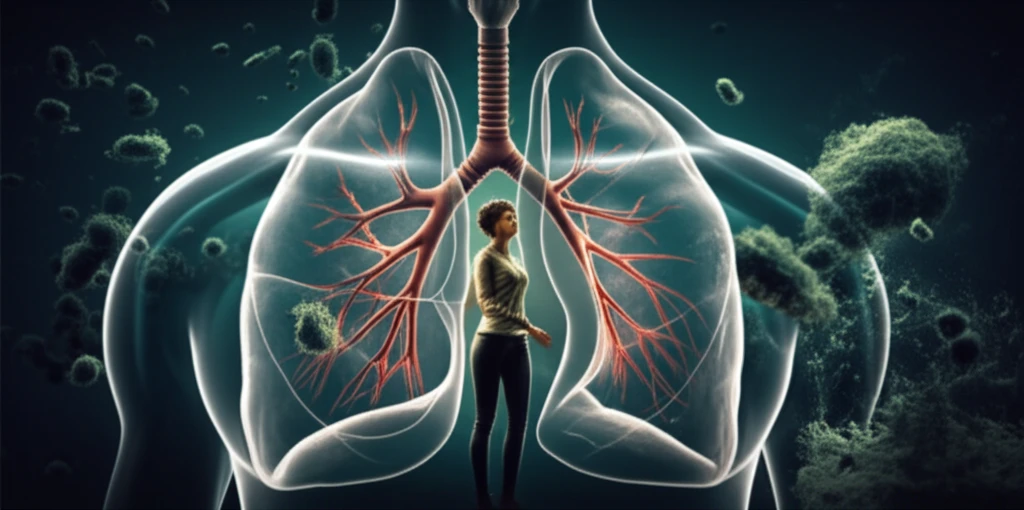
Is the Air You Breathe Toxic? How Fine Particles Impact Your Lungs
"Uncover the hidden dangers of ambient fine particulate matter and its surprising effects on lung health, especially for women and those under 40."
In today's world, air pollution is an inescapable reality. While we often hear about the general dangers of pollution, specific components like fine particulate matter (PM2.5) pose a significant threat to our health. These microscopic particles, smaller than 2.5 micrometers in diameter, can penetrate deep into your lungs and even enter your bloodstream, causing a range of health issues.
PM2.5 sources include vehicle emissions, industrial processes, and even household activities like burning wood. Because of their small size, PM2.5 particles bypass our body's natural defenses, leading to both short-term and long-term health problems. Understanding these risks is the first step in protecting yourself and your loved ones.
Recent research has focused on how PM2.5 affects the lungs and cardiovascular system. Traditional studies often use simple cell models, but new research is using more complex models that mimic the actual environment in our lungs. These advanced models allow scientists to study how different lung cells interact and respond to PM2.5, giving us a clearer picture of the health risks involved.
How Does PM2.5 Exposure Impact Your Lung Health?

A study published in Toxicology Letters investigated the impact of ambient fine particulate matter on lung cells using advanced co-culture models. These models simulate the lung's air-blood barrier, which is crucial for understanding how pollutants affect our bodies. The researchers used cells from the alveoli (the tiny air sacs in your lungs) and endothelial cells (which line blood vessels) to create a realistic environment for studying the effects of PM2.5.
- Inflammation: PM2.5 exposure triggered a strong inflammatory response in the lung cells. This means the cells released chemicals that signal the body to fight off a threat, even though there was no infection. Chronic inflammation can lead to long-term lung damage.
- Cell Damage: The PM2.5 particles damaged the lung cells, particularly in the more complex models that included different types of lung cells interacting. This suggests that the combined effect of PM2.5 on various cell types is more harmful than its effect on individual cells.
- Barrier Disruption: The lung models showed that PM2.5 can weaken the lung's natural barrier, making it easier for harmful substances to enter the bloodstream. This barrier is crucial for keeping pollutants and pathogens out of the body.
What Can You Do to Protect Your Lungs?
While the research highlights the dangers of PM2.5, it also empowers us to take action. Here are some steps you can take to protect your lungs: <ul> <li><b>Monitor Air Quality:</b> Stay informed about local air quality levels using resources like the EPA's AirNow website or local weather apps.</li> <li><b>Limit Outdoor Activities:</b> On days with high PM2.5 levels, reduce strenuous outdoor activities, especially if you have asthma or other respiratory conditions.</li> <li><b>Use Air Purifiers:</b> Consider using an air purifier with a HEPA filter in your home to remove PM2.5 particles from the air.</li> <li><b>Support Clean Air Policies:</b> Advocate for policies that reduce air pollution, such as investments in public transportation and cleaner energy sources.</li> </ul> By staying informed and taking proactive steps, you can protect your lungs from the harmful effects of PM2.5 and breathe easier knowing you're doing your part to create a healthier environment.
